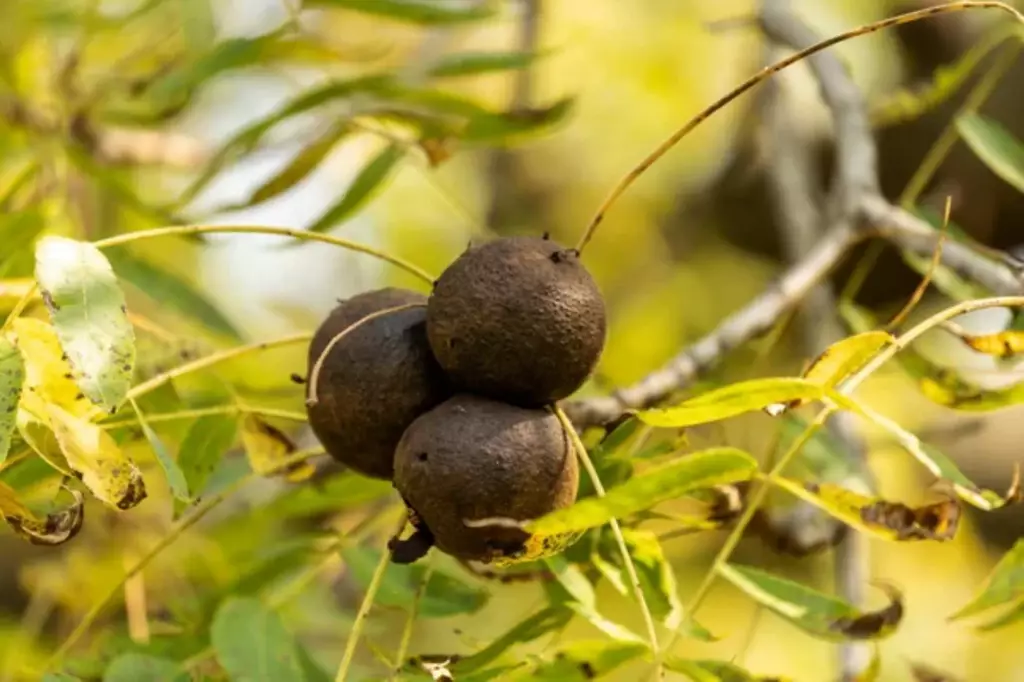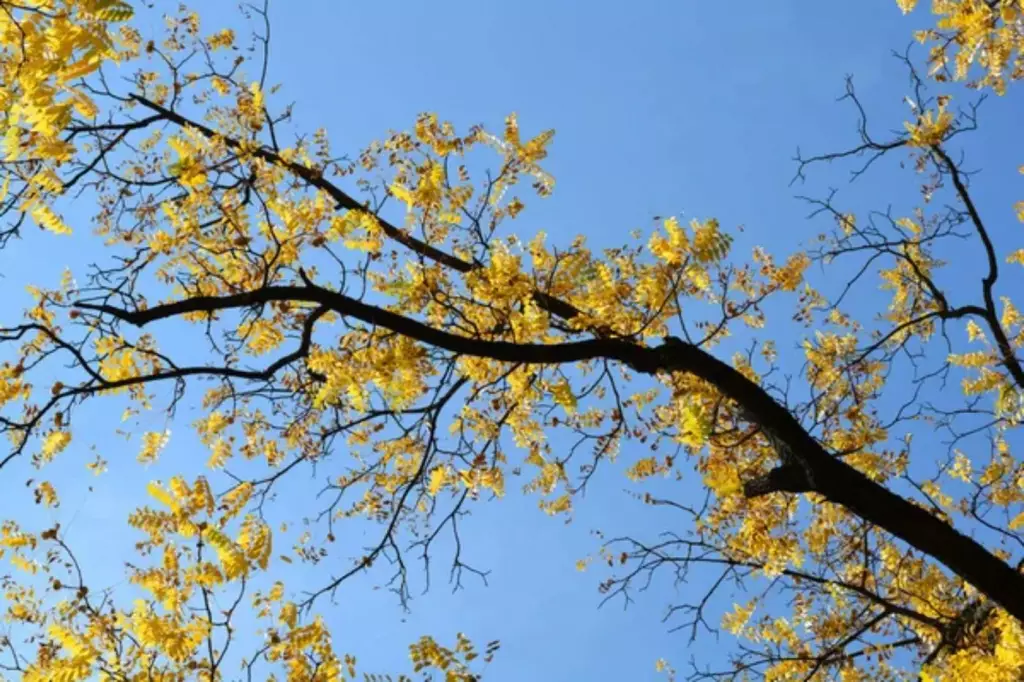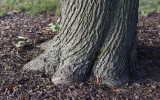How Fast Do Black Walnut Trees Grow?
Black walnut trees grow at a moderate pace, attributed to their dense wood, which makes it a bit more challenging for the tree to expand its trunk and branches. However, with patience and proper care, these trees can eventually reach heights of around 100 feet. In this article, we aim to explore how fast black walnut trees grow and the factors influencing their growth rate.
Black walnut trees typically grow 3 to 4 feet per year after germination. You can expect these trees to grow between 12 and 30 inches per year. In the right conditions, it can take around 12 to 15 years for the tree to produce its first nut crop.
Black walnut trees need minimal watering, so irrigating every two to three weeks should suffice. Let's take a closer look at the ideal conditions these trees require to grow fast and healthy.
It's important to consider how fast black walnut trees grow, since their growth rate will impact your planning for orchard spacing, management, and long-term yield expectations, as you begin starting your walnut farm from scratch.
Summary
- Black walnut seeds require a period of dormancy before they can sprout, a process called stratification that involves artificially inducing dormancy for 3–4 months before sowing the seeds in the spring.
- The growth rate of black walnut trees is relatively slow compared to other popular tree species, such as hybrid poplar and silver maple, which are categorized as fast-growing trees.
- Soil quality and nutrient availability, particularly the presence of nitrogen-rich soil and moist, well-drained soils, helps promote the growth and development of black walnut trees.
- The application of suitable fertilizer, such as ammonium sulfate, during early spring can enhance the nitrogen content and contribute to improved overall health and vigor of the trees.

On this page:
Growth Rate of Black Walnut Trees
When it comes to the growth rate, you can expect a black walnut tree (Juglans nigra) to grow between 12 and 30 inches per year. After germination, they typically grow 3 to 4 feet per year. In the right conditions, it can take around 12 to 15 years for the tree to produce its first nut crop.
After the plantation of the walnut seeds, it takes some time for the seed to germinate and produce seedlings. A more detailed explanation of the growth stages of black walnut trees can be found in this article.
To ensure that your tree thrives, you'll need to pay attention to factors such as soil quality, planting location, temperature, and even natural herbicides released by the tree's roots, which are known as juglone.

Black walnut trees (Juglans nigra) are beautiful deciduous trees belonging to the Juglandaceae family. Native to Eastern North America, these majestic trees are cherished for their high-quality wood and delicious nuts.
As you grow your black walnut tree, you'll notice that it grows at a moderate pace of around 12–24 inches per year. You need to be patient, as they can eventually reach heights of around 100 feet.
The slow growth rate can be attributed to their dense wood, making it a bit more challenging for the tree to expand its trunk and branches.
Keep in mind that these trees also have a unique characteristic: they produce a natural herbicide called juglone. Juglone, found in the tree's roots, leaves, and fruit husks, can adversely impact certain plants growing nearby.
So, you may need to be careful when selecting companion plants for your black walnut tree and be mindful as well with how many black walnut trees should you plant per acre.
Watering your black walnut tree is simple, as it requires minimal irrigation due to its diverse root system. In fact, watering every two to three weeks should suffice. However, avoid wetting the trunk and lower branches to minimize disease risk in the crown and roots.
When it comes to germination, black walnut seeds need a period of dormancy before they can sprout. This process, called stratification, involves artificially inducing dormancy for 3–4 months before sowing the seeds in the spring.
Black walnut trees start producing nuts when they are about 12–15 years old and live up to 250 years. To learn further about their lifespan, you can find all the information you need in this article.

Comparing the Growth Rate of Black Walnut Trees to Other Tree Species
In this section, we'll take a look at some popular tree species and their growth rates, so you can get a better understanding of how fast black walnut trees grow relative to other trees:
| Tree Species | Growth Rate | Mature Height |
|---|---|---|
| Hybrid poplar | 8-12 feet/year | 50-85 feet |
| Silver maple | 3-6 feet/year | 50-80 feet |
| Black walnut | 1-2.5 feet/year | 60 feet |
| Red oak | 1-3 feet/year | 50-100 feet |
| Sycamore | 1-2 feet/year | 80-100 feet |
| Ginkgo biloba | 1-2 feet/year | 50-80 feet |
When comparing the growth rate of black walnut trees to other tree species, it's evident that black walnut trees are considered to have a relatively slow growth rate compared to some other popular tree species.
For instance, the hybrid poplar and silver maple are categorized as fast-growing trees, with growth rates of 8-12 feet per year and 3-6 feet per year, respectively. These trees can reach mature heights of 50-85 feet and 50-80 feet, respectively.
On the other hand, black walnut trees are classified as moderate-growing trees, with a growth rate of 1-2.5 feet per year and a mature height of around 60 feet. This places them in the same category as the red oak, which also has a moderate growth rate of 1-3 feet per year.
In contrast, the sycamore and Ginkgo biloba are considered slow-growing trees, with growth rates of 1-2 feet per year. Despite their slow growth, sycamore trees can reach heights of 80-100 feet, while Ginkgo biloba trees can reach heights of 50-80 feet.
Factors Affecting the Growth Rate of Black Walnut Trees
In this section, we will explore the various factors that impact the growth rate of black walnut trees, such as sunlight, soil quality, watering practices, and more.
Sunlight and its influence on growth
Sunlight plays a crucial role in the growth of black walnut trees. The exposure to full sun provides the necessary energy for the process of photosynthesis, which is essential for the tree's optimal growth.
Photosynthesis is the biochemical process through which plants, including black walnut trees, convert light energy into chemical energy, producing their own food in the form of glucose and oxygen. This process is directly dependent on the availability of sunlight.

When black walnut trees are situated in shaded areas or do not receive adequate sunlight, their ability to photosynthesize is significantly hindered.
As a result, the trees may struggle to reach their full growth potential and may exhibit stunted growth. This is because the limited sunlight availability restricts the tree's ability to produce the energy it needs to fuel its growth and development.
In order to ensure the best growth for black walnut trees, you may need to provide them with at least 6 hours of direct sunlight daily.
This ensures that the trees have sufficient access to the light energy needed for photosynthesis and overall metabolic processes. Adequate sunlight exposure not only supports the tree's growth but also contributes to its overall health and resilience.
Soil quality and nutrient availability
Black walnut trees are known for their ability to thrive in various soil types, but they particularly favor moist and well-drained soils. The presence of nitrogen-rich soil is also beneficial for the optimal growth of black walnut trees.
One way to enhance the nitrogen level in the soil is by applying a suitable fertilizer, such as ammonium sulfate, during the early spring.
This application can effectively contribute to improving the nitrogen content, thereby promoting healthier growth and development of the black walnut trees.
The preference for moist, well-drained soils is crucial for black walnut trees as it ensures that the roots have access to the necessary moisture while preventing waterlogging, which can be detrimental to their health.
Additionally, the significance of nitrogen-rich soil cannot be overstated, as nitrogen is a fundamental nutrient required for various physiological processes in plants, including the formation of proteins, chlorophyll, and nucleic acids.
By applying ammonium sulfate, which is a readily available source of nitrogen, the soil's nutrient profile can be enhanced, leading to improved overall health and vigor of the black walnut trees.
However, note that the timing of the application of ammonium sulfate is essential. Early spring is an ideal period for applying this fertilizer, as it coincides with the active growth phase of the trees.
This allows the trees to efficiently utilize the added nitrogen during a time when their demand for nutrients is high, ultimately contributing to robust growth and development throughout the growing season.
Watering and irrigation practices
Black walnut trees have specific moisture requirements and are sensitive to both over-watering and under-watering. Achieving the right balance helps them achieve optimal growth and overall health.
Black walnut trees thrive in consistent moisture, but they are intolerant of excessively wet or dry conditions. Therefore, you may need to monitor the moisture level of the soil regularly. This can be done by physically inspecting the soil or by using moisture meters to accurately assess the water content.
To ensure the proper growth of black walnut trees, you will need to adjust the frequency and amount of watering based on the observed moisture levels. During periods of low rainfall or dry weather, supplemental irrigation may be necessary to maintain the desired soil moisture.
Conversely, during periods of heavy rainfall or high humidity, try to avoid over-watering, as excessive moisture can lead to root rot and other issues.
In addition to monitoring soil moisture, perhaps consider also the timing of watering. Watering in the early morning or late afternoon is generally recommended to minimize water loss due to evaporation and to allow the moisture to penetrate the soil effectively.
Furthermore, mulching around the base of black walnut trees can help regulate soil moisture by reducing evaporation and maintaining a more stable root environment.
Organic mulches such as wood chips or shredded bark not only conserve moisture but also contribute to soil health as they decompose.

Pest and disease management
Black walnut trees are susceptible to various threats including insects, fungal infections, and bacterial diseases. Regular inspection of the trees can help identify any signs of infestation or disease.
Early detection allows for prompt action to prevent further damage. Signs of pest infestation may include visible insects, chewed leaves, or abnormal growth patterns.
Fungal infections and bacterial diseases can manifest as discolored or wilting leaves, cankers on the trunk or branches, or unusual growths on the tree.
Preventive measures may include maintaining proper tree nutrition and watering, promoting good air circulation around the tree, and using appropriate mulching techniques.
Additionally, the use of insecticidal soaps, horticultural oils, and organic pesticides can help control insect infestations while minimizing harm to the tree and surrounding environment.
In cases where the infestation or disease is severe, it is advisable to seek the expertise of arborists or horticulturists. These professionals can provide tailored recommendations for managing specific pests and diseases, as well as offer guidance on the appropriate use of chemical treatments if necessary.
As you learn about the growth of black walnuts, it's equally important to be aware of common black walnut problems, as this knowledge will help you effectively manage your orchard and ensure robust growth and health of your trees.
Genetic variability and tree age
Trees with superior genetics often exhibit faster growth rates and may reach maturity earlier than those with less favorable genetics. This genetic variability can impact various aspects of a tree's growth, including its overall size, rate of growth, and resilience to environmental stressors.
In the case of black walnut trees, genetic variability can influence their growth rates and aging process. As a black walnut tree ages, it is common for its growth rate to slow down. To know the value of black walnut trees with different ages, this article will break it down for you.

This slowdown in growth can be attributed to a combination of genetic factors, environmental conditions, and the tree's natural aging process.
Proper care and maintenance of the tree can help mitigate the effects of genetic variability and aging. By providing optimal growing conditions, including adequate water, nutrients, and sunlight, the tree can continue to thrive and reach its full potential.
With the right care, a black walnut tree has the potential to reach impressive heights of up to 60 feet within a span of 20 to 40 years, showcasing the impact of genetic variability on its growth and development.



